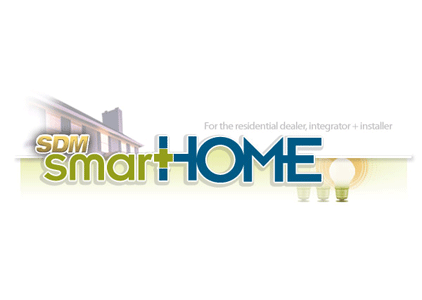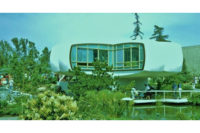First off, what will happen in 2012 will not happen to every dealer or electronic home system contractor. It all depends on your business model, customer base, region of the country, mix of technology and services, and — oh my — the economy.
And, no doubt, most things that happened this year will carry over, like a Wal-Mart layaway, into 2012.
Still, smartHOME has dusted off its crystal ball and, thanks to valuable and diverse input, sees 2012 as marking a continued evolution of the business of home systems, home automation, and home security. OK, no great prediction there. But, it seems overall that more dealers and contractors are moving beyond gee-wiz lux lifestyle installations to selling value, convenience, and — hold on to your Wall Street hat — a client’s return on investment.
This first in a series provides an overview of trends from big to small that are impacting or should be considered by firms serving this sector. Upcoming installments will go into greater detail, often based on valuable perceptions of our virtual experts panel — professionals in the business, from large to mom-and-pop, from urban to rural, supplemented by researcher and equipment maker input, too.
Overall, there is relatively good news on the 2012 horizon, says Jeff Singer of Crestron of Rockleigh, N.J. Sometimes a bumpy road, “we are seeing upward trending in the residential market. It was growing extremely rapidly then cooled off. Now it is upward again; the market is growing and starting to segment. It was technology for the luxury market. Further development of wireless, mobile smart devices, streaming devices help make it more accessible to a much broader market.”
Among hot button concepts and trends:
- Security panels now, and into the future, will do more and varied tasks, thanks to more complex programming, more radios inside them, tighter integration with home devices and appliances, and an ability to interact with smartphone-linked apps.
- Beyond security and traditional home automation, home energy management and control is today’s justifier, when homeowners consider a new purchase or an upgrade.
- For those focusing on new home construction and structured wiring, there is a sliver of silver among the housing clouds, depending on geography.
- When it comes to foreclosures, there is a growing opportunity to add new-age wiring and home systems as one way to add appeal as real estate professionals and banks seek more ways to shine the apple.
- Aging-in-place and home healthcare, while only starting to emerge beyond “I’ve-fallen-down” emergency alerts, have the potential to hit the big time as time ticks and healthcare services themselves evolve.
- Wireless in the home, homeowner mobility, portability, and interactive services continue to be hot buttons in 2012 as smartphones and home system apps spread.
- With home area networks (HANs) and wireless home area networks (WHANs) supporting a growing number of desktop and laptop computers, as well as gaming devices, many practitioners anticipate a coming together of such networks with security/home systems panels. A few see value in turning themselves into a total home tech solutions provider.
- For some, home theaters are cooling or shifting while streaming audio, marked by cool AirPlay-like buzz, and streaming video bring entertainment to a home’s individuals in individual rooms and according to individual preferences.
- Smarter televisions are becoming a point of convergence of entertainment, communications, the Web, and views of the doors, garage, pool, and patio.
- Touchpanels are getting a makeover touchup as animation, unique buttons, colors, news feeds all add up to a more enjoyable experience when using them.
- Broader distribution will continue to impact dealers and electronic home system contractors. ADT pushes its Pulse. Broadband service providers including Verizon, Comcast/Xfinity, Time Warner, and Canada’s Rogers will make more inroads with their various degrees of home systems and monitoring. At the same time, home computer technology folks ranging from Best Buy’s Geek Squad to localized firms are moving from Windows 7 and router concerns to more fully featured home systems installation, support, and maintenance.
- There will continue to be a shift to homeowner self-programming to some degree after initial design and installation. Complementing that shift, there is a shift by dealers and electronic home system contractors to more revenue from a diversity of monitoring offerings.
- No doubt, there is a blending of life safety and lifestyle; but, in 2012, the fine line between bundled and strangled gets thinner. More simplicity for the homeowner in the face of more complexity of the systems is the key.
- Going green can create more greenbacks for some firms as homeowners view more reasons to jump on the bandwagon in areas ranging from home energy management to alternative energy sources as well as help with the proper and mandated disposal of certain electronics gear. Green, however, is somewhat grey during this economically challenging time as homeowners fret more about their jobs and paying the bills than necessarily in protecting the environment and its resources.
“The past couple years we’ve seen a move toward ‘greener, smarter’ homes. I think both will continue to thrive in 2012 with networking, or, better yet, ‘advanced networking, seeing the biggest impact. Customers will have more affordable options to pretty much control, access, or share anything they want through their own personal network,” points out Dwight Sears of Silent Guard Security, Somerset, Ky.
There is importance and dealer value in a single platform approach. And here, the platform can get even more sophisticated. Originally designed for its commercial side, for example, Crestron has a building management system for home use that can be handle alternative energy sources, according to Singer.
Anticipating the future is also a key to successfully managing it. Says JT Hwang, chief information officer for Salt Lake City-based Vivint, “Back in 2007, we recognized [the expansion beyond security] and made the decision to put a panel in that is not just security but an opportunity to provide more services.” The firm worked with Go!Control for a panel that covers security and life safety as well as integrated with the thermostat, lighting, door locks, and video surveillance.
The decision and accompanying technology have increased the firm’s recurring monthly revenue, decreased attrition, and created even more opportunities such as partnerships with some utilities regarding home energy management and control. Vivint even has a sister company which sells and installs home solar panels, integrated into the total company home-based technology.
Running a successful company in rural Kentucky, Sears adds, “Mobile Web use is at an all-time high and it is still relatively new. We’re seeing more and more customers choosing many of our interactive services.”
Jay Kenny, vice president of marketing at Alarm.com of Vienna, Va., not surprisingly, that bringing interactive services into the mix more forcefully in 2012 will create more recurring monthly revenue, lower attrition, and encourage homeowners to use more and diverse services, logging more often into a smartphone, for instance. Kenny’s firm serves the security and home monitoring firms that serve the homeowners.
He predicts even more enabling technology for those final end users. “We are in beta with ways the homeowners can interact even more with their system,” with creation of rules and suggestions that the homeowner can accept or decline.
“While there is emergence of new technologies on the security panel,” says Bill Graham, senior vice president, sales and marketing with Guardian Protection Services, Warrendale, Pa., it all is now often “more affordable to the homeowner” and [the improvements and advances] “generate a lot of interest.” Considering the growth and diversity of HANs and WHANs, Graham suggests that different solutions work for different applications, but in some areas, “take streaming video, for example, hardwired is way best. Pick a platform but pick the right infrastructure” for your clients and your business model,” adds Graham, who sees GSM and Wi-Fi coming together in some ways.
With about 1,000 employees, Graham feels among his firm’s challenges in 2012 is getting the organization up to speed — a feeling shared by even the smaller sized firms. “There are plenty of opportunities out there. So first see value in those that make business sense to you.”
Bruce Scott of Scott Alarm, Jacksonville, Fla., has tasted and been a key player in the ups and downs of the industry even before the days security alarm firms were fighting the Regional Bell Operating Companies. “Today, the [telephone companies] don’t have to provide home service.” He says that about three percent of his clients use POTS. At the same time, “smart homes will get even smarter” in 2012 and beyond, Scott adds.
While you have to differentiate yourself from traditional security alarm firms, it is “more challenging to show value to the customer” for expanded services. Promotion and education “must now be on a continuous basis,” he contends.
Which gets us to that continuous contention of simplicity expected by the homeowner with the complexity of the ever-evolving connected home and its converging systems and devices, according to Tricia Parks, CEO at Parks Associates, the pioneering research firm in Dallas, Texas.
Sears agree. “The biggest homeowner need going into 2012 is simplicity. With all of the advancing technology options, it has to be made easy to operate. Customers want to do more with less; a one button does all, so to speak.”
Still, Parks says that “the bundling of benefits will significantly increase market penetration by, I believe 50 percent.” She suggests that currently security and life safety alarm monitoring is at about 18 percent. The goal is a “stickier relationship” with the homeowner. And, into 2012, “the driving force is the power of IP,” she says.
Parks Associates will host the 2012 Connections Summit at the Consumer Electronics Show on January 10 in Las Vegas.
Among its future-proofing sessions:
A Smart TV 2012 outlook examines the evolving role of the television as it becomes the foundation for the connected home and influences use of game consoles, tablets, cloud services, and smartphones. And the Personal Cloud and Digital Locker outlook features the latest consumer research on the transition of digital media to the cloud, the business challenges, and opportunities created by the digital locker.
Speaking of the move from family to personal, Tommy Franklin of SmartCom of Fredericksburg, Va., tends to agree. His firm, by the way, has wired about 700 homes this year. “From home theater [there is trending] to whole house audio and video” thanks to the impact of the iPod and iPad. “There is streaming from a variety of sources.”
No doubt, says Franklin, wireless limits the amount of [structured] wiring in the home. And most people are using it; but we focus on quality wireless.” He also sees growing involvement in home energy management and control as well as green initiatives, depending in some measure on the business model of the home builders he works with. “We are working with Control4 with an eco-dashboard in the kitchen,” for instance.


